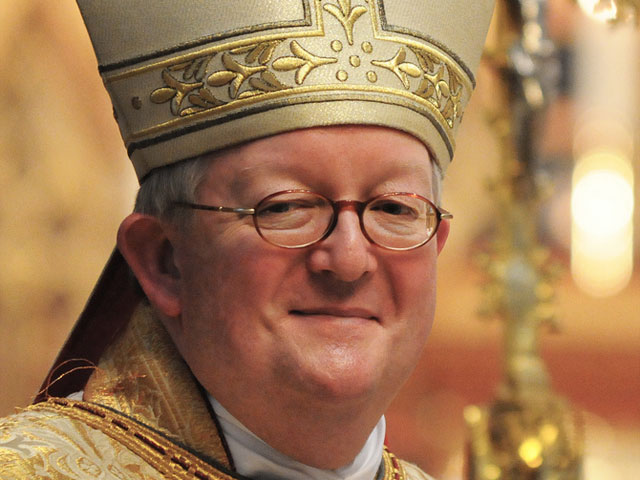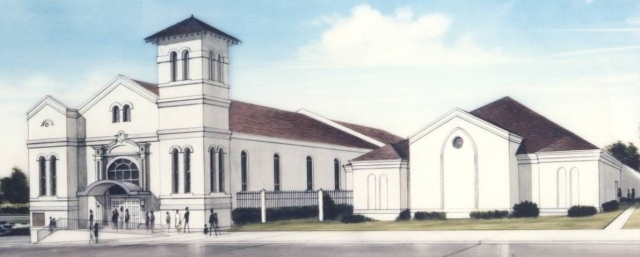Here is a craft question for you, GetReligion readers. No, I don’t mean freemasonry but journalism. When should a reporter use his editorial voice to correct or challenge an assertion made by the subject of his story? What if the assertion is not central to the story at hand? What if the assertion is in line with convention wisdom, but is not true?
This item in a suburban newspaper serving the Hampstead and Highgate area of the London borough of Camden, Ham & High, tees up this question nicely. Under the headline of “Hampstead church first in London to allow same-sex civil partnership ceremonies”, Ham & High reports that Rossyln Hill Chapel, a Unitarian congregation, has voted to permit its American minister, the Rev. Patrick O’Neill, to solemnize same-sex civil partnerships. The lede states:
A Hampstead church could become the first in London to hold civil partnership ceremonies in its chapel following an unprecedented vote.
The article recounts the congregations internal deliberations on offering same-sex blessings for civil partnerships and O’Neill’s application to the Camden Council for a license to perform the ceremonies.The congregation voted unanimously in support of the innovation, and O’Neill explained the decision was motivated in part by the church’s belief that it should be a prophetic voice to the community on this issue.
Our motivation for this is always to be pressing for greater equality for all people which is very much consistent with our basic values as a church,” he explained. “The issue for us now is setting an example for the wider community.
The article also offers background on the issue of same-sex blessings under English law and notes the coalition government has allowed religious institutions to solemnize same-sex civil partnerships. It also gives O’Neill space to discuss his views on same-sex blessings and lets him distinguish his denomination’s stance from the Church of England and the Roman Catholic Church, which do not permit its clergy to solemnize civil partnerships.
The article is nicely constructed with strong quotes, good context and an explanation of motivation. Who, what, when, where, why are all here.
There is also this quote from O’Neill:
He added: “We need to raise cultural awareness and recognise that in our society ten to 15 per cent of people are gay, lesbian or bisexual”. He said: “It affects many families, whether they recognise it or not.”
Is this true? I have no reason to suppose that O’Neill has been quoted incorrectly. What I mean by my question is “10 to 15 per cent” of the population gay/lesbian? This is a hotly debated point and has been since the Kinsey studies were published in the late 40’s which first posited the 10 to 15 per cent figure. However in 2010 the Office for National Statistics in the U.K. reported that 1.5 per cent of the British population is gay.
In its account of the ONS study, the Guardian wrote:
How many people are gay in Britain? It’s a question which has vexed government and the tabloid press alike for some time. Estimates vary from around 5% to 7% (from a Treasury assessment before the civil partnership act in 2004) through to a much lower 2.2% from the latest British crime survey.
Well, today, the Office for National Statistics has published the most comprehensive breakdown on the question yet. It survey 238,206 people across Britain — dwarfing even the mighty British crime survey, which “only” asks 22,995 people. In fact, the sample is slightly smaller, once you discount don’t knows, refusals and non-responses — but still a large 247,623.
It’s part of the ONS’ Integrated Household Survey, which comes out once a year to a normally muted response, largely because it’s buried on the terrible ONS website. The questioning involved showing people a card of options and asking them to indicate which category they fitted into. As a result, the ONS is highly confident about the results. Extrapolated nationally, they suggest a population of 726,000 gay, lesbian or bisexual people in the UK.
This also raises the question of what does it mean to be gay? Is it purely self-identification, or does inclination and past experience determine what it means to be gay/lesbian?
In its 2006 study on human sexuality, the Australian Longitudinal Study of Health and Relationships reported that .66 per cent of women and 1.03 per cent of men self-identified as gay/lesbian. This study, in conjunction with the ONS report and other studies would seem to dismiss the claims of O’Neill.
Yet if you go deeper into the Australian study and look at Table 3 you will see the question of sexual identity is rather more nuanced.
Table 3: Sexual Identity, Attraction and Experience of Respondents
|
Sex
|
||||
| Female | Male | Total | ||
| Sexual identity | Heterosexual | 98.08 | 97.72 | 8,027 |
| Homosexual | 0.66 | 1.03 | 69 | |
| Bisexual | 1.26 | 1.23 | 102 | |
| Queer | 0 | 0.02 | 1 | |
| Total | 4,121 | 4,078 | 8,199 | |
| Sexual attraction | Opposite sex | 90.6 | 95.88 | 7,642 |
| Both sexes | 8.89 | 3.31 | 501 | |
| Same sex | 0.22 | 0.64 | 35 | |
| Neither sex | 0.29 | 0.17 | 19 | |
| Total | 4,117 | 4,080 | 8,197 | |
| Sexual experience | Opposite sex | 89.94 | 91.08 | 7,418 |
| Both sexes | 7.21 | 6.06 | 544 | |
| Same sex | 0.1 | 0.37 | 19 | |
| Neither sex | 2.74 | 2.5 | 215 | |
| Total | 4,117 | 4,079 | 8,196 | |
While the rate of self-identification as gay/lesbian in the population hovers at around 1 per cent, the rates for sexual attraction to the same sex and sexual experience are much higher.
The journalism question I have is: Should the author have responded to O’Neill’s claim of 10 to 15 percent? In defense of the reporter, the issue of the proportion of gays and lesbians in the population is not the central subject of the story. And, chasing down every claim and statement made by a subject in a story can distract from the central issue — which here was that a Hampstead church will be the first in London to offer gay blessings.
Yet the veracity of the proportion of gays in society claim touches upon the motivation for the congregation of Rosslyn Hill Chapel. Should an assertion that something is true be challenged when there is evidence that it is not true? Or, would it suffice to say the question is disputed?
What say you GetReligion readers? Should you believe everything you read in the newspapers or expect the newspapers to make sure everything presented to you is true?
Photo courtesy of Shutterstock.











